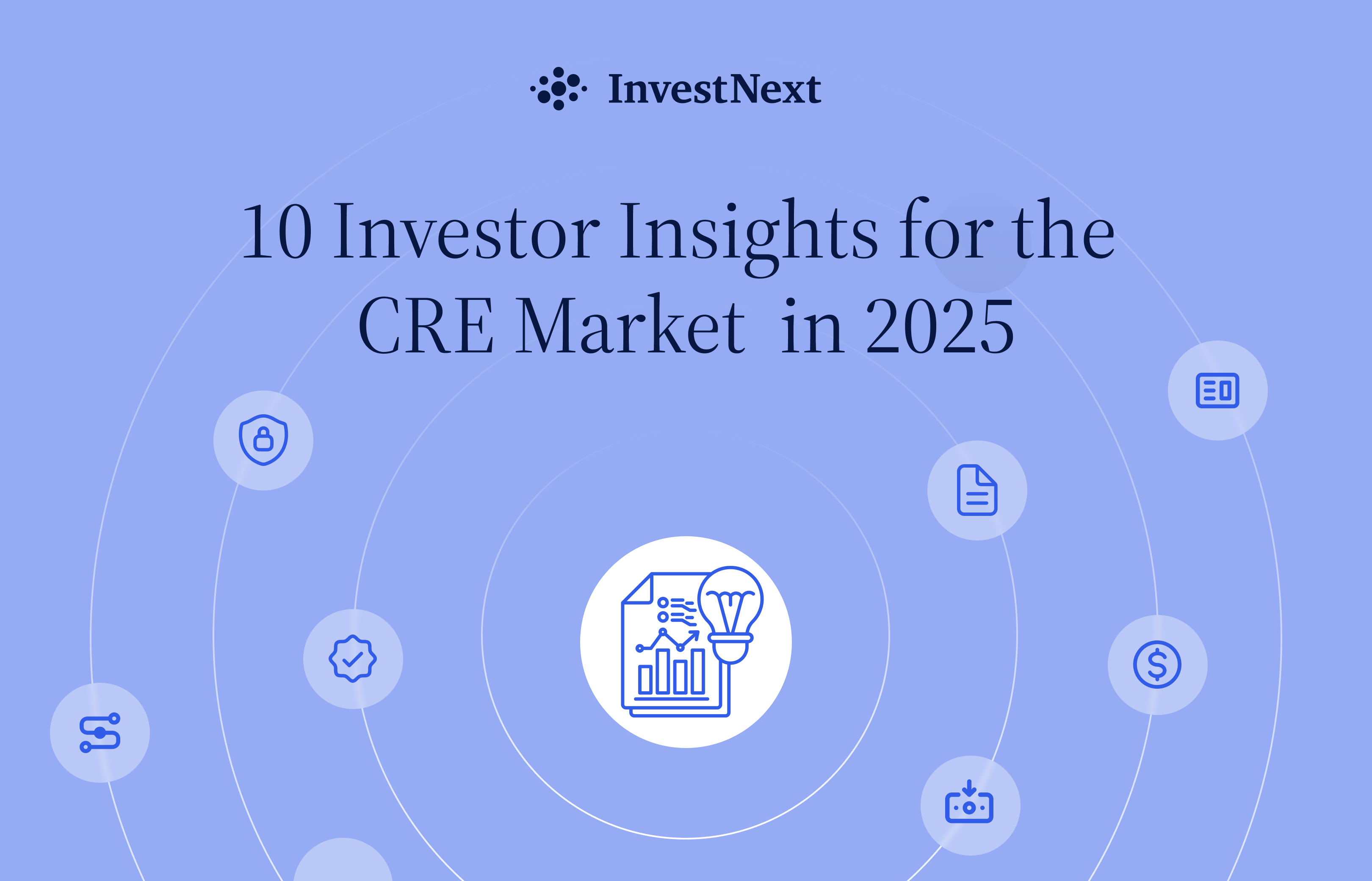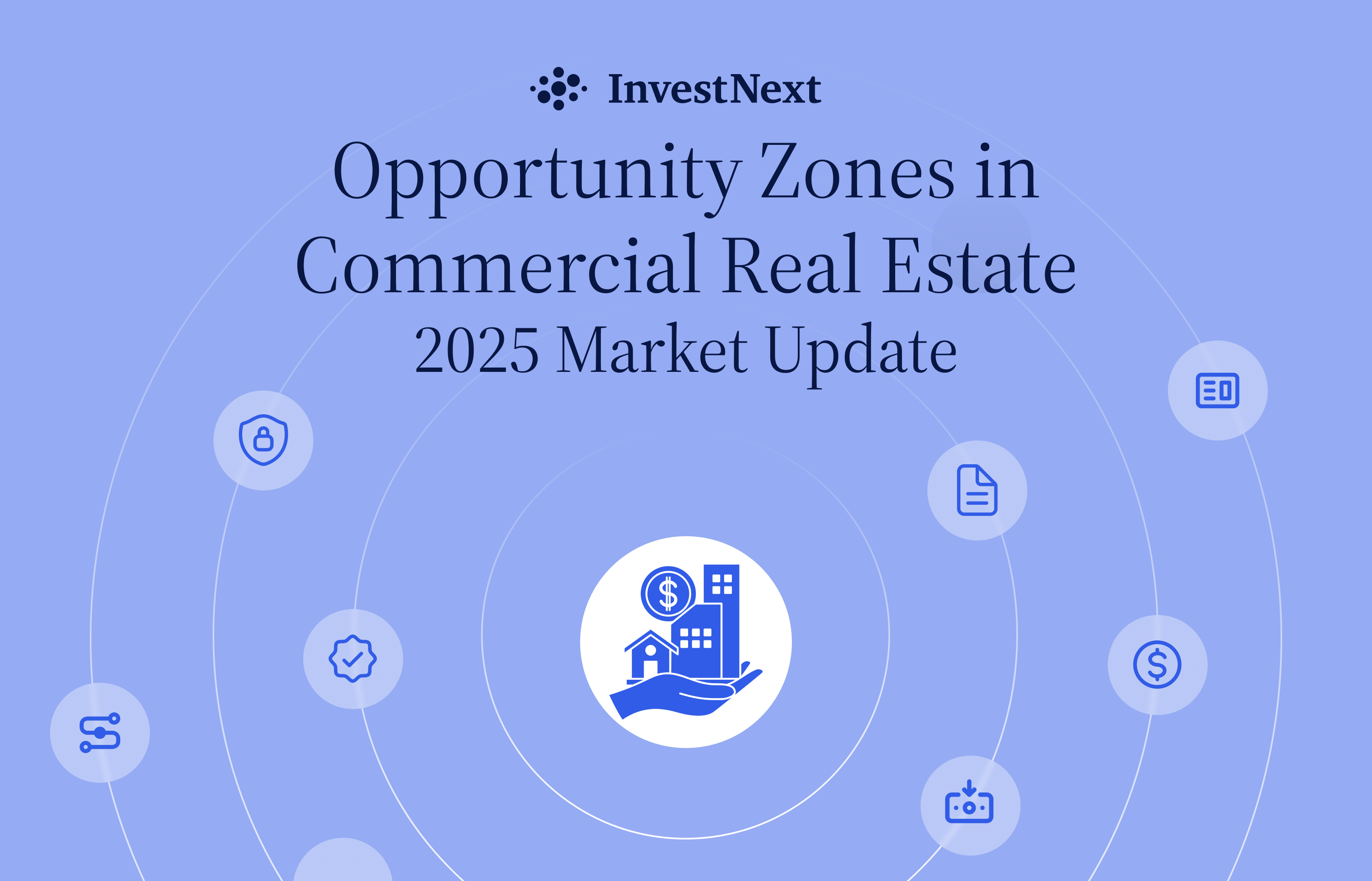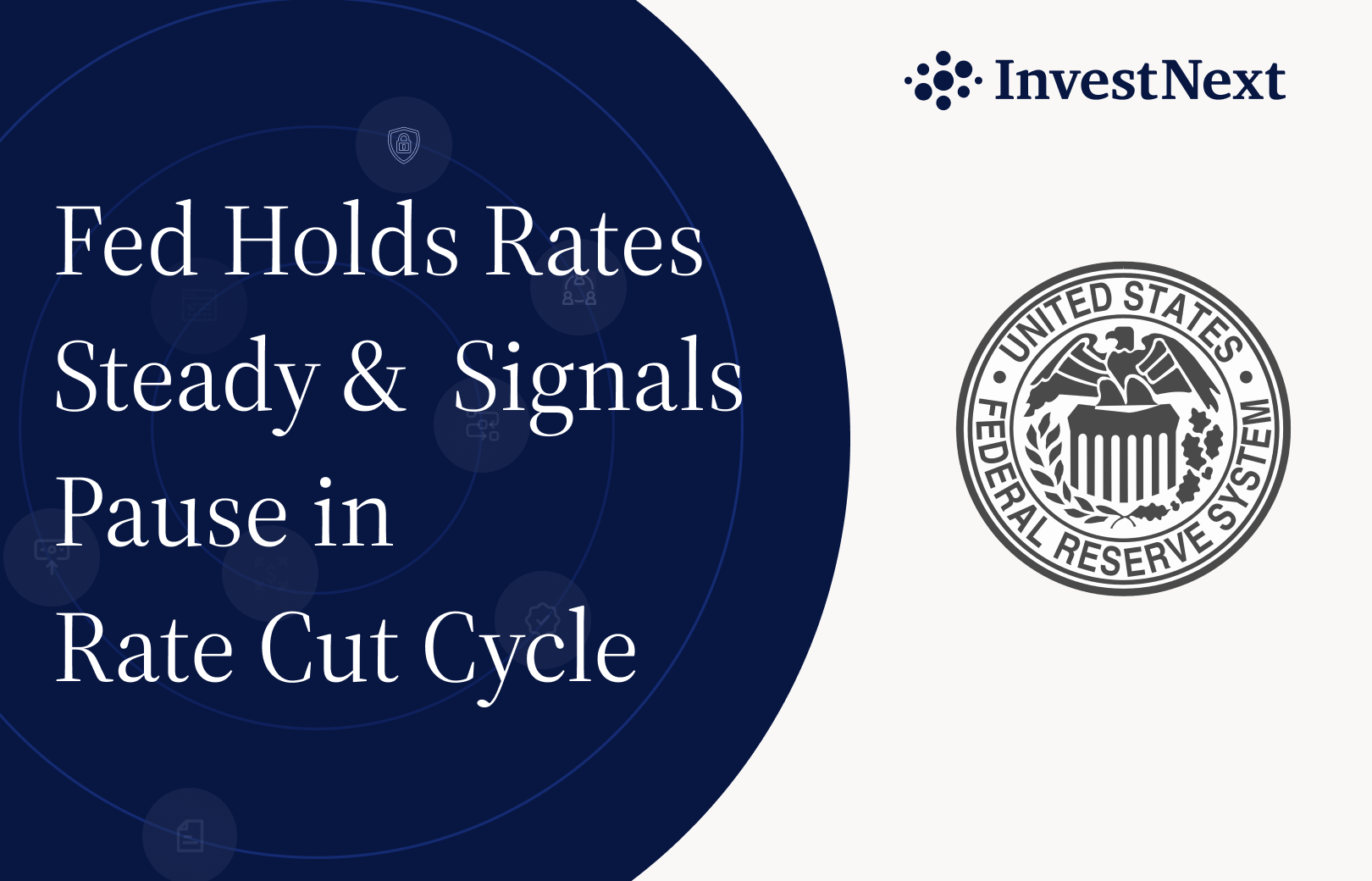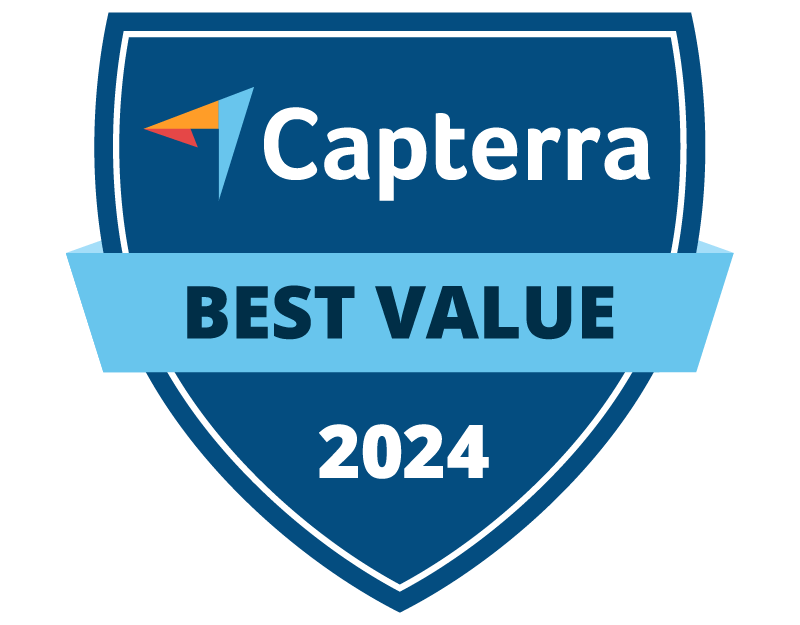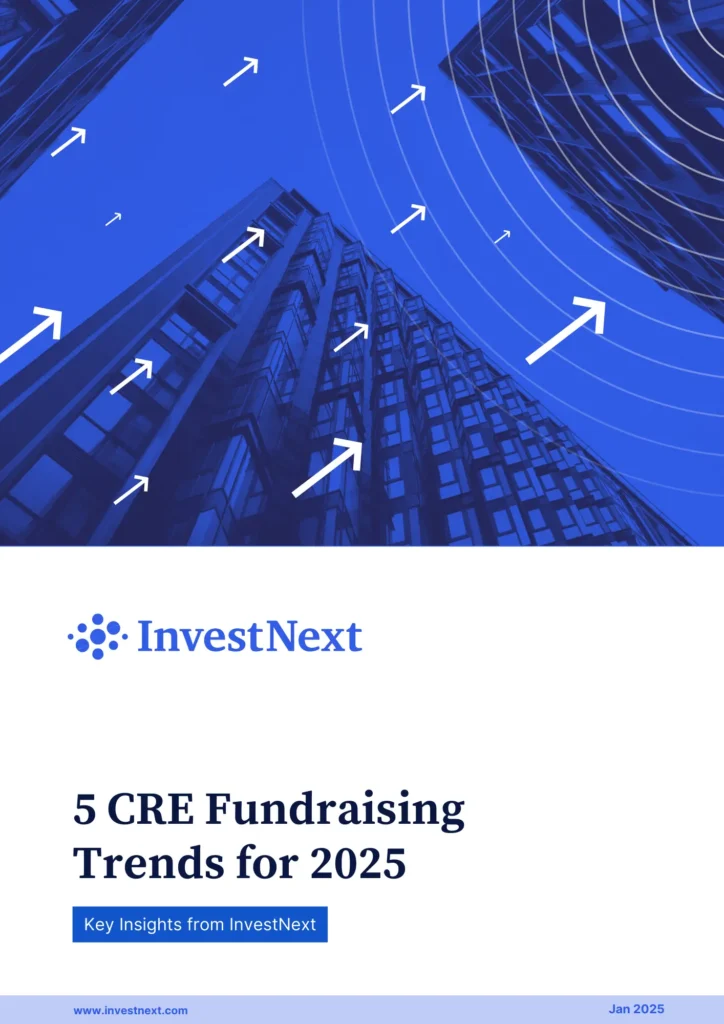Market volatility defined commercial real estate performance in 2024. Rising interest rates and shifting tenant demands create a complex investment landscape for 2025. CRE investors face critical decisions about portfolio positioning and capital deployment.
Significant opportunities exist despite market challenges. Emerging sectors show strong growth potential, particularly in specialized asset classes and high-demand markets. Success requires precise identification of these growth pockets and strategic portfolio alignment.
Market analysis and expert consultation reveal 10 essential strategies for CRE success in 2025. These insights span data center investments, Sun Belt market expansion, and emerging opportunities across the commercial real estate spectrum. Each strategy addresses specific market conditions while positioning investors for sustainable returns.
Key Takeaways
- Data center investments show exceptional growth potential, with market valuations reaching $324 billion
- Sun Belt markets continue outperforming, capturing 80% of U.S. population growth
- ESG integration becomes essential as regulations tighten and institutional capital demands sustainability metrics
- Technology infrastructure investments can reduce operational costs by up to 48%
- Strategic debt market navigation remains critical as rates stabilize
Data Centers Lead Investment Opportunities
Data centers command exceptional market position for 2025 investment strategies. Global data center valuations reach USD 324 billion1, signaling robust growth potential. Market fundamentals point toward sustained expansion across major metropolitan regions.
Data Center Market Analysis
Market projections show substantial growth trajectory through 2034, reaching USD 776 billion2. AI computing requirements drive demand upward, posting 33% annual growth rates through 20302. Industry leaders Digital Realty and Equinix maintain dominant REIT positions globally3.
Data Center Investment Requirements
Success in data center investments demands specific infrastructure elements:
- Power Capacity: New facilities require 200-400 megawatt power systems4
- Strategic Locations: Premium markets offer reliable power grids and fiber networks5
- Technical Systems: Advanced cooling infrastructure and security measures5
- Capital Intensity: Square foot costs exceed traditional office investments5
Data Center ROI Potential
Data center investments generate strong returns, with cap rates holding between 4-6%, matching Class A multifamily assets3. Market strength shows through multiple indicators:
- Vacancy rates reach historic lows, pushing rent growth6
- U.S. data center investment projections hit USD 1 trillion over five years7
- Tech sector and financial institutions drive steady demand5
Northern Virginia exemplifies market strength, currently supporting 3,000 MW capacity. Plans call for 2,840 MW additional capacity across five markets within four years3. These expansion patterns create strategic entry points for capital deployment through 2025.
Strategic Portfolio Rebalancing

Image Source: CRE Daily
Portfolio rebalancing demands precise execution for 2025. Institutional investors show significant real estate exposure, with allocations exceeding targets for 40% of investors in 2023, up from 32% in 20228. Market conditions require strategic assessment and calculated positioning.
Portfolio Assessment Methods
Portfolio review starts with fundamental metrics analysis. Singapore’s GIC exemplifies strategic allocation shifts, moving real estate positions to 13% in 2023 from 10% in 20229. Critical assessment areas include:
| Assessment Area | Focus Points |
|---|---|
| Financial Health | Rental Income & Occupancy |
| Physical Assets | Maintenance & Renovation Needs |
| Market Position | Local Demand & Economic Indicators |
| Tenant Profile | Lease Agreements & Quality |
Asset Class Allocation
Market conditions and risk parameters guide allocation decisions. Yale Endowment’s David Swensen advocates 20% real estate allocation10. Strategic diversification requires:
- Geographic spread for market risk reduction
- Property type balance across sectors
- Mixed debt and equity positions
Risk Management Strategies
FDIC research highlights critical CRE program weaknesses, particularly in cash flow analysis and appraisal reviews8. Effective risk management requires specific controls:
Market Risk Assessment: Economic indicators and local market conditions demand regular monitoring. Geographic diversity provides downside protection during market shifts11.
Insurance Coverage: Physical damage, liability protection, and income loss coverage form essential safeguards11.
Contingency Planning: Reserve funds protect against financial risks and potential defaults11. Capital raising efforts in 2025 require strong risk management foundations.
Portfolio protection demands continuous risk assessment and strategy adjustment11. This methodology captures market opportunities while maintaining investment stability.
Sun Belt Markets Acceleration
Sun Belt markets command attention for 2025 investment strategies. Population metrics show the region holding over 50% of the national population12. Demographic patterns point toward sustained growth across major metropolitan areas.
Population Growth Trends
Sun Belt growth metrics reveal compelling investment fundamentals. Regional expansion accounts for 80% of total U.S. population growth over the past decade12. Population projections through 2033 show 11 million new residents (+7.3%) in Sun Belt states, while non-Sun Belt regions add merely 475,000 residents12.
| Growth Metric | Sun Belt | Non-Sun Belt |
|---|---|---|
| 10-Year Job Growth | +20% (13M jobs) | +9% (6M jobs) |
| Population Growth (2024-2033) | +7.3% | +0.3% |
| Current Population Share | >50% | <50% |
Economic Indicators
Economic fundamentals support sustained market strength. Key performance metrics demonstrate regional advantages:
- Business Expansion: Job creation, GDP growth, and wage increases outpace non-Sun Belt regions12
- Employment Growth: Sun Belt captures half of U.S. office-using employment12
- Demographic Advantage: Millennial concentration reaches 52%, projected to represent 75% of workforce by 203012
Market Entry Points
High-growth metropolitan areas offer strategic entry opportunities. Austin, Dallas, Orlando, and Tampa demonstrate exceptional office-using job creation12. Population forecasts through 2033 highlight key investment markets:
Texas leads population growth projections with 3.5 million new residents, followed by Florida at 2.6 million13. Arizona and North Carolina show strong growth potential, adding 1.1 million and 1 million residents respectively13.
Business-friendly policies, including reduced tax burdens and streamlined regulations14, create favorable investment conditions. These market fundamentals support both commercial and residential real estate strategies through 2025.
Debt Market Navigation
CRE debt markets require precise positioning for 2025 investment strategies. Outstanding CRE mortgage debt reaches $6 trillion15, making financing structures critical for portfolio success. Market conditions point toward strategic opportunities across multiple lending channels.
Lending Environment Overview
Lending markets signal positive momentum heading into 2025. Bank appetite for CRE exposure increases as interest rates trend downward16. Underwriting standards maintain stability, with loan-to-value ratios consistent at 50-60%17.
| Lending Metric | Current | 2025 Projection |
|---|---|---|
| Fed Benchmark Rate | 4.75-5% | 3.4%18 |
| Average LTV Ratio | 50-60% | Stable17 |
| Bank CRE Holdings | 50.8% | Expected Growth17 |
Financing Options
Capital sources show increasing diversity beyond traditional banking channels. Primary funding alternatives include:
- Government-sponsored enterprises hold 17.2% market share17
- Life insurance companies and CMBS markets demonstrate renewed activity19
- Alternative lenders target specialized asset opportunities17
Interest Rate Impacts
Federal Reserve policy shifts create favorable borrowing conditions. Rate projections indicate 3.4% levels by late 202516, improving debt service coverage metrics and reserve requirements19.
Declining rates strengthen cash flow coverage ratios, potentially reducing bank loss reserve requirements19. Stabilized multifamily assets and premium office properties benefit from these conditions for 2025 capital raises16.
CRE debt maturities reach $1.9 trillion through 202619. Success requires strategic timing between rate cycles and strong capital source relationships. Market conditions favor borrowers who maintain multiple funding channels while monitoring rate movements.
ESG Integration Requirements
ESG standards reshape investment fundamentals for 2025 portfolios. Market data shows 70% of survey respondents implementing ESG criteria20. Capital markets increasingly demand verifiable sustainability metrics and transparent governance structures.
Sustainability Metrics
Real estate operations generate 40% of global greenhouse gas emissions21. Performance tracking requires specific measurement protocols across key categories:
| Metric Category | Performance Indicators |
|---|---|
| Environmental | Carbon footprint, water usage |
| Social | Community impact, tenant well-being |
| Governance | Board diversity, transparency |
Compliance Standards
SEC climate risk disclosure requirements establish clear reporting protocols. Critical documentation includes:
- Climate risk governance structures
- Operational impact assessments
- Portfolio emission measurements22
CSRD protocols mandate expanded ESG reporting by 202523. Portfolio operations face heightened disclosure requirements across environmental and social metrics.
Implementation Costs
Inflation Reduction Act provisions offset compliance investments. Tax incentives include:
Commercial property improvements earn $2.50 per square foot at 25% energy reduction, reaching $5.00 per square foot at 50% reduction22. Multifamily certifications generate $2,500 per unit for Energy Star compliance and $5,000 per unit for Zero Energy Ready status22.
ESG investment projections reach $33.90 trillion by 202624, marking 84% growth24. Strong ESG frameworks position portfolios for institutional capital while building sustainable asset value.
Multifamily Sector Optimization
Multifamily sector performance demands precise operational frameworks. Market conditions require deep demographic understanding coupled with technology-driven management systems.
Demographic Drivers
Rental market dynamics show clear generational patterns. Digital platforms capture over 80% of rental searches25. Demographic segments shape market demand:
| Age Group | Market Impact |
|---|---|
| Millennials | Prime working years, delayed homeownership |
| Gen Z | Entering rental market, prefer flexibility |
| Baby Boomers | Downsizing to luxury rentals |
Location Selection
Market fundamentals dictate asset positioning. Premium locations near schools, parks, and transit command higher rents26. Essential market indicators include:
- Income metrics showing three times projected rent within one-mile radius27
- Sustained employment growth patterns
- Quality amenity infrastructure presence
Operational Efficiency
Technology integration drives portfolio performance metrics. Smart systems generate measurable improvements across operations:
- Automated rent collection shows 5% revenue increase28
- Predictive maintenance reduces operational costs
- Digital platforms enhance tenant engagement
Smart building technologies optimize both energy consumption and tenant satisfaction29. Centralized management structures cut on-site staffing needs by 48.4%28, strengthening operational margins for 2025 capital raises.
Asset selection prioritizes properties suitable for automated work order systems and digital management platforms29. These operational frameworks support sustained portfolio growth while maintaining cost efficiency.
Industrial Asset Opportunities
Industrial sector fundamentals demonstrate exceptional stability. Market evolution demands strategic positioning between advanced manufacturing facilities and distribution centers.
E-commerce Impact
E-commerce growth drives industrial space absorption rates. Space requirements show 1.25 million square feet needed per USD 1.00 billion in e-commerce revenue30. Online retail operations demand triple the space of traditional retail footprints31.
| Market Indicator | Current Status | 2025 Projection |
|---|---|---|
| National Vacancy Rate | 5.6% | Stabilizing32 |
| Construction Pipeline | 424.5M sq ft | Decreasing32 |
| Tenant Demand | Manufacturing +20% | Growing33 |
Location Strategy
Market evolution demands precise site selection criteria. Primary markets show distinct patterns:
- Phoenix, Dallas, Inland Empire dominate construction volumes32
- Central U.S. benefits from population migration trends33
- Urban infill sites capture last-mile logistics demand34
Tenant Demand
Manufacturing requirements post 20% annual growth33. Logistics operators maintain strong market presence. National vacancy rates hold at 5.6%32, supporting stable asset performance.
Advanced manufacturing facilities, particularly EV, battery, and semiconductor plants32, offset broader construction declines. These sectors promise sustained growth through 2025-2026.
Overall demand shows 2% annual decline33, yet sector fundamentals remain strong through supply chain diversification32. Quality industrial assets continue attracting substantial capital flows34.
Technology Infrastructure Investment
Technology infrastructure shapes CRE portfolio performance metrics. Market analysis reveals 35-45% inefficiency in current CRE tech spending35. Strategic digital deployment demands precise implementation frameworks.
PropTech Solutions
Smart building systems establish operational foundations. IoT sensors and AI platforms redefine property management capabilities36. Essential technology components include:
- Automated building management systems
- Predictive maintenance platforms
- Tenant experience applications
- Energy optimization tools
Digital Integration
Digital infrastructure requires power capacity planning. Data centers show substantial energy consumption patterns37. AI applications project 160% power demand growth by 203037.
| Technology Investment | Expected Impact |
|---|---|
| Smart Building Systems | 48% operational efficiency |
| Data Analytics | 31% workflow improvement |
| AI Integration | 29% cost reduction |
Operational Benefits
Digital systems generate measurable performance improvements. AI-enabled property management platforms optimize maintenance scheduling and space utilization36. Portfolio benefits include:
Smart building automation eliminates manual processes, reducing operational overhead38. Performance metrics show:
- Real-time monitoring capabilities for building systems
- Automated reporting functions streamline decisions39
- Enhanced security through system integration39
Technology infrastructure positions portfolios for 2025 capital markets. PropTech integration creates revenue opportunities through data monetization and operational efficiency36. Modern tenant requirements align with digital-first property management frameworks.
Value-Add Property Plays
Value-add acquisitions present compelling yield enhancement opportunities for 2025 portfolios. Market value adjustments create strategic entry points across property sectors. Asset selection and execution capabilities determine investment performance.
Asset Identification
Target properties showing operational improvement potential. Assets with 60-68% occupancy rates demonstrate substantial upside through strategic management40. Selection criteria prioritize:
- Stable in-place cash flow with market rent gaps
- Supply-constrained submarkets
- Below-replacement-cost basis
- Correctable physical deficiencies
Renovation Strategy
Capital improvement programs require precise return metrics. Strategic renovations generate NOI growth reaching 100% over 18-month periods40. Investment returns show clear patterns:
| Improvement Type | Typical Investment | NOI Impact |
|---|---|---|
| Lobby Renovation | $600,000 | 15-20% |
| HVAC Updates | $250,000 | 10-15% |
| Unit Upgrades | $1,000,000 | 25-30% |
Premium locations near urban cores and transit nodes command higher post-renovation rents41. Investment strategies target both immediate yield enhancement and terminal value appreciation.
Exit Planning
Exit execution requires market cycle awareness. Core assets attract institutional capital, while value-add opportunities draw enhancement-focused investors42.
Physical improvements align with buyer requirements. Sustainability features increasingly drive institutional pricing decisions42. Exit timing considers multiple factors:
- Market cycle positioning
- Value-add program completion
- Capital markets dynamics
- Interest rate conditions
Well-executed enhancement strategies achieve 2.13x equity multiples before transaction costs40. These returns attract yield-focused capital in stabilizing 2025 markets43.
Risk Mitigation Strategies
Risk management protocols require systematic implementation across CRE portfolios. Market data indicates heightened exposure to interest rate fluctuations, cyber threats, and tax policy shifts44.
Market Risk Assessment
CRE success demands comprehensive risk evaluation protocols. Smart building adoption creates additional security considerations44. Risk categories show distinct patterns:
| Risk Category | Impact Level | Mitigation Priority |
|---|---|---|
| Interest Rates | High | Immediate |
| Cyber Security | Medium-High | Critical |
| Tax Policy Changes | Medium | Strategic |
| Climate Impact | Long-term | Essential |
Insurance Coverage
Insurance frameworks extend beyond standard asset protection. Property coverage addresses multiple risk vectors, including fire, explosions, burst pipes, storms, theft, and vandalism45. Essential policy components include:
- Building and content protection
- Business interruption insurance
- Liability coverage for tenant-related incidents
- Environmental risk protection
Property location determines premium structures, particularly in natural disaster zones46.
Contingency Planning
Financial stability requires robust contingency structures. Reserve funds provide essential protection against market disruptions47. Strategic planning elements include:
Reserve Fund Management: Operating expense coverage during vacancy periods and unexpected repairs47.
Financial Buffers: Separate contingency and capital reserve allocations address immediate and long-term requirements48.
Alternative Capital Sources: Private credit markets provide liquidity when traditional lending contracts44.
Market conditions demand adaptive risk frameworks. Bank lending patterns indicate sustained conservative approaches44. Capital formation strategies require diversified funding relationships.
Regular market analysis and stress testing ensure risk management effectiveness49. These protective measures support portfolio stability while maintaining growth potential.
Comparison Table
Strategic investment opportunities show distinct patterns across CRE sectors. Market metrics indicate varied return potential through multiple investment approaches.
| Investment Tip | Market Opportunity | Key Drivers | Implementation Requirements | Expected Returns/Benefits |
|---|---|---|---|---|
| Data Centers | $324B current market, projected to reach $776B by 2034 | AI computing demands (33% annual growth) | Power infrastructure (200-400MW), location strategy, technical specs | 4-6% cap rates |
| Portfolio Rebalancing | 40% of institutional investors exceeding targets | Market volatility, changing allocations | Portfolio review system, risk assessment tools | 20% recommended allocation to real estate |
| Sun Belt Markets | >50% of national population | 80% of U.S. population growth, business expansion | Market entry strategy in high-growth metros | 7.3% population growth through 2033 |
| Debt Market Navigation | $6T in CRE mortgage debt | Declining interest rates | Strong lender relationships, timing strategy | Expected rate decrease to 3.4% by late 2025 |
| ESG Integration | $33.90T projected investment by 2026 | Regulatory requirements, sustainability focus | Carbon tracking, compliance systems | Up to $5/sq ft tax deductions |
| Multifamily Optimization | 80% of renters start search online | Demographic shifts, delayed homeownership | Smart technology integration, automated systems | 5% increase in collected rents |
| Industrial Assets | 424.5M sq ft construction pipeline | E-commerce growth, manufacturing demand | Strategic location selection | 5.6% national vacancy rate |
| Technology Infrastructure | 35-45% current tech spend inefficient | Digital transformation, AI adoption | PropTech solutions, smart building systems | 48% operational efficiency improvement |
| Value-Add Property | Properties with 60-68% occupancy | Market value adjustments | Renovation strategy, exit planning | Up to 100% NOI growth over 18 months |
| Risk Mitigation | Multiple risk categories identified | Interest rates, cyber security, tax policy | Insurance coverage, contingency funds | Enhanced portfolio resilience |
Market opportunities span traditional and emerging sectors. Return metrics demonstrate varied performance potential across investment strategies. Implementation requirements highlight distinct operational needs for each approach.
What This Means for Real Estate Investment Firms
As market dynamics evolve, investment firms need robust technology infrastructure and automated workflows to scale efficiently. Modern fund and syndication management platforms like InvestNext enable firms to streamline operations across the entire investment lifecycle – from capital raising through investor distributions.
Success in 2025 requires more than just identifying the right opportunities; it demands precise execution across capital raising, investor management, and back-office operations. Real estate investment firms that combine strategic market positioning with modern technology infrastructure will be best positioned to capture growth opportunities while maintaining operational excellence.
FAQs
Q1. What are the top investment opportunities in commercial real estate for 2025? Data centers and Sun Belt markets are emerging as leading investment opportunities. Data centers are projected to reach a $776 billion market by 2034, driven by AI computing demands. Sun Belt markets are experiencing significant population growth and business expansion, making them attractive for both commercial and residential real estate investments.
Q2. How important is ESG integration for commercial real estate investors in 2025? ESG integration is becoming crucial for CRE investors. With ESG-focused institutional investment projected to reach $33.90 trillion by 2026, implementing sustainability metrics, complying with new standards, and leveraging tax incentives for energy efficiency can significantly impact an investment’s performance and attractiveness to capital sources.
Q3. What strategies can investors use to optimize their multifamily property investments? Investors can optimize multifamily investments by focusing on demographic drivers, strategic location selection, and operational efficiency. Implementing smart technology and centralized operations can lead to significant cost reductions, increased rent collection, and enhanced tenant satisfaction.
Q4. How is technology shaping commercial real estate investments? Technology is transforming CRE through PropTech solutions, digital integration, and operational benefits. Investments in smart building systems, data analytics, and AI integration can lead to substantial improvements in operational efficiency, workflow optimization, and cost reduction across property portfolios.
Q5. What risk mitigation strategies should CRE investors consider for 2025? Key risk mitigation strategies include comprehensive market risk assessments, robust insurance coverage, and thorough contingency planning. Investors should focus on building reserve funds, maintaining financial buffers, and exploring alternative capital sources to protect against market volatility and unforeseen challenges.
References
[1] – https://www.datacenterdynamics.com/en/broadcasts/dcd-data-center-investment-and-markets-broadcasts-2024/2024/episode-jan25/
[2] – https://www.forbes.com/councils/forbestechcouncil/2024/12/23/five-trends-that-will-define-the-data-center-industry-in-2025/
[3] – https://www.moodys.com/web/en/us/insights/lending/navigating-the-cre-sector-data-centers-in-age-of-genai.html
[4] – https://www.bdcnetwork.com/home/news/55234915/10-biggest-impacts-to-the-data-center-market-in-20242025
[5] – https://risingrp.com/insight/the-ultimate-guide-to-investing-in-data-centers/
[6] – https://www.cbreim.com/insights/articles/decoding-data-centers
[7] – https://www.blackstone.com/insights/article/the-convergence-of-data-centers-and-power-a-generational-investment-opportunity-the-connection/
[8] – https://www.fdic.gov/regulations/examinations/supervisory/insights/sisum04/sisummer04-article4.pdf
[9] – https://www.us.jll.com/en/trends-and-insights/research/global/global-capital-outlook/cre-as-an-asset-class-the-long-term-attraction
[10] – https://www.realtymogul.com/knowledge-center/article/asset-allocation-real-estate
[11] – https://www.mrisoftware.com/blog/commercial-real-estate-risk-management-strategy-investors/
[12] – https://www.clarionpartners.com/insights/sun-belt-apartments-multifamily
[13] – https://irei.com/wp-content/uploads/2024/06/Jul-Aug-2024-RAA-ClarionPartners-SponsorReport.pdf
[14] – https://www.northspyre.com/blog/why-sunbelt-markets-will-continue-to-boom-in-2024
[15] – https://www.ey.com/en_us/insights/real-estate-hospitality-construction/higher-interest-rates-and-the-impact-on-real-estate
[16] – https://www.credaily.com/briefs/banks-expect-more-cre-lending-in-2025-as-rates-fall/
[17] – https://commercialobserver.com/2024/11/banks-poised-commercial-real-estate-lending-rebound-2025/
[18] – https://www.jpmorgan.com/insights/real-estate/commercial-term-lending/interest-rate-cuts-impact-on-multifamily-real-estate
[19] – https://thefinancialbrand.com/news/admin/feature/cre-outlook-2025-how-a-bust-could-become-a-boom-182465/
[20] – https://www.cbiz.com/insights/articles/article-details/a-sustainable-edge-how-esg-drives-value-in-commercial-real-estate-investments
[21] – https://www.forbes.com/councils/forbesbusinesscouncil/2024/10/10/esg-in-commercial-real-estate-trends-and-opportunities/
[22] – https://www.afslaw.com/perspectives/alerts/esg-and-the-commercial-real-estate-industry-financing-options-and-tax
[23] – https://www.ey.com/en_lu/insights/sustainability/staying-ahead-with-esg-2025-key-regulatory-updates-and-strategic-actions
[24] – https://www.randstadusa.com/business/business-insights/talent-management/what-businesses-should-know-about-esg-reporting/
[25] – https://www.jpmorgan.com/insights/real-estate/agency-lending/multifamily-investment-strategies-for-portfolio-optimization
[26] – https://www.jpmorgan.com/insights/real-estate/investing/how-to-create-a-multifamily-location-strategy
[27] – https://www.linkedin.com/pulse/7-rules-choosing-best-location-your-next-multifamily-investment-gee
[28] – https://www.altusgroup.com/insights/leveraging-technology-reduce-multifamily-expenses-optimize-performance/
[29] – https://www.jpmorgan.com/insights/real-estate/multifamily/reducing-operating-costs-for-commercial-real-estate
[30] – https://www.cbre.com/insights/briefs/ecommerces-impact-on-industrial-real-estate-demand
[31] – https://www.cushmanwakefield.com/en/united-states/insights/what-do-recent-ecommerce-trends-mean-for-industrial-real-estate
[32] – https://www.matthews.com/a-look-at-industrial-cre-fundamentals/
[33] – https://www.us.jll.com/en/trends-and-insights/research/industrial-tenant-demand-study
[34] – https://www.vhb.com/viewpoints/whitepapers/ecommerce-growth-and-industrial-space-demand/
[35] – https://www2.deloitte.com/us/en/pages/real-estate/articles/digital-disruption-in-commercial-real-estate.html
[36] – https://biznology.com/2023/12/how-digital-technologies-are-revolutionizing-the-commercial-real-estate-industry/
[37] – https://www.walkerdunlop.com/insights/future-real-estate-digital
[38] – https://www.smartspaces.app/blog/digital-transformation-in-the-commercial-real-estate-sector/
[39] – https://www.friedmanrealestate.com/5-benefits-of-technology-driving-increased-adoption-in-cre/
[40] – https://www.cbreim.com/-/media/project/cbre/bussectors/cbreim/insights/articles/perspectives-the-case-for-value-add-real-estate-investment-february-2020/value-add-white-paper-hnw.pdf
[41] – https://www.crowdstreet.com/resources/investment-fundamentals/adding-value-to-commercial-real-estate-assets
[42] – https://www.linkedin.com/pulse/exit-strategies-value-maximization-commercial-real-estate-infinity9-eedre
[43] – https://www.us.jll.com/en/trends-and-insights/investor/big-questions-real-estate-is-asking-in-2025
[44] – https://www2.deloitte.com/us/en/insights/industry/financial-services/commercial-real-estate-outlook.html
[45] – https://www.nationwide.com/lc/resources/small-business/articles/what-is-commercial-property-insurance
[46] – https://www.investopedia.com/terms/c/commercial-property-insurance.asp
[47] – https://www.thirtycapital.com/managing-cre-cashflow-to-prevent-financial-distress/
[48] – https://www.rlpcommercialtoronto.com/commercial-real-estate-news/the-importance-of-having-a-contingency-and-capital-reserve-fund-in-cre
[49] – https://www.communitybankingconnections.org/-/media/cbc/fedlinks/2018/20181217-Dec-Fedlinks.pdf?sc_lang=en&hash=D279941FD7F14CBEF1A71DF115F59E5F
